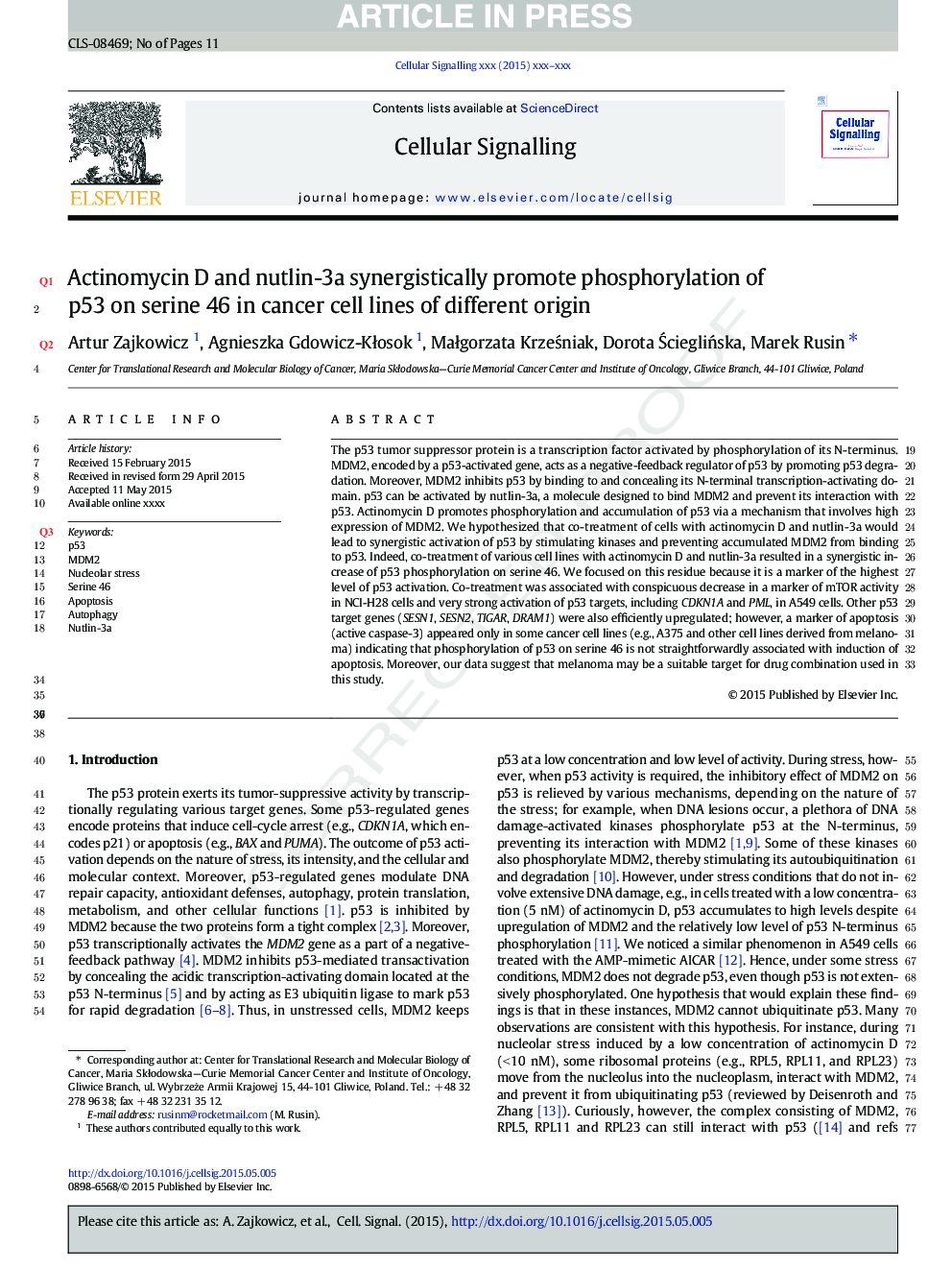| Article ID | Journal | Published Year | Pages | File Type |
|---|---|---|---|---|
| 10814842 | Cellular Signalling | 2015 | 11 Pages |
Abstract
The p53 tumor suppressor protein is a transcription factor activated by phosphorylation of its N-terminus. MDM2, encoded by a p53-activated gene, acts as a negative-feedback regulator of p53 by promoting p53 degradation. Moreover, MDM2 inhibits p53 by binding to and concealing its N-terminal transcription-activating domain. p53 can be activated by nutlin-3a, a molecule designed to bind MDM2 and prevent its interaction with p53. Actinomycin D promotes phosphorylation and accumulation of p53 via a mechanism that involves high expression of MDM2. We hypothesized that co-treatment of cells with actinomycin D and nutlin-3a would lead to synergistic activation of p53 by stimulating kinases and preventing accumulated MDM2 from binding to p53. Indeed, co-treatment of various cell lines with actinomycin D and nutlin-3a resulted in a synergistic increase of p53 phosphorylation on serine 46. We focused on this residue because it is a marker of the highest level of p53 activation. Co-treatment was associated with conspicuous decrease in a marker of mTOR activity in NCI-H28 cells and very strong activation of p53 targets, including CDKN1A and PML, in A549 cells. Other p53 target genes (SESN1, SESN2, TIGAR, DRAM1) were also efficiently upregulated; however, a marker of apoptosis (active caspase-3) appeared only in some cancer cell lines (e.g., A375 and other cell lines derived from melanoma) indicating that phosphorylation of p53 on serine 46 is not straightforwardly associated with induction of apoptosis. Moreover, our data suggest that melanoma may be a suitable target for drug combination used in this study.
Related Topics
Life Sciences
Biochemistry, Genetics and Molecular Biology
Biochemistry
Authors
Artur Zajkowicz, Agnieszka Gdowicz-KÅosok, MaÅgorzata KrzeÅniak, Dorota ÅciegliÅska, Marek Rusin,
